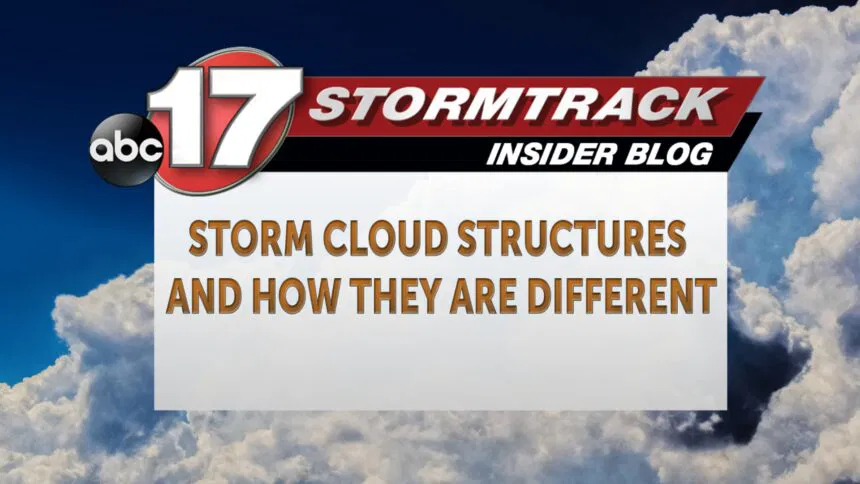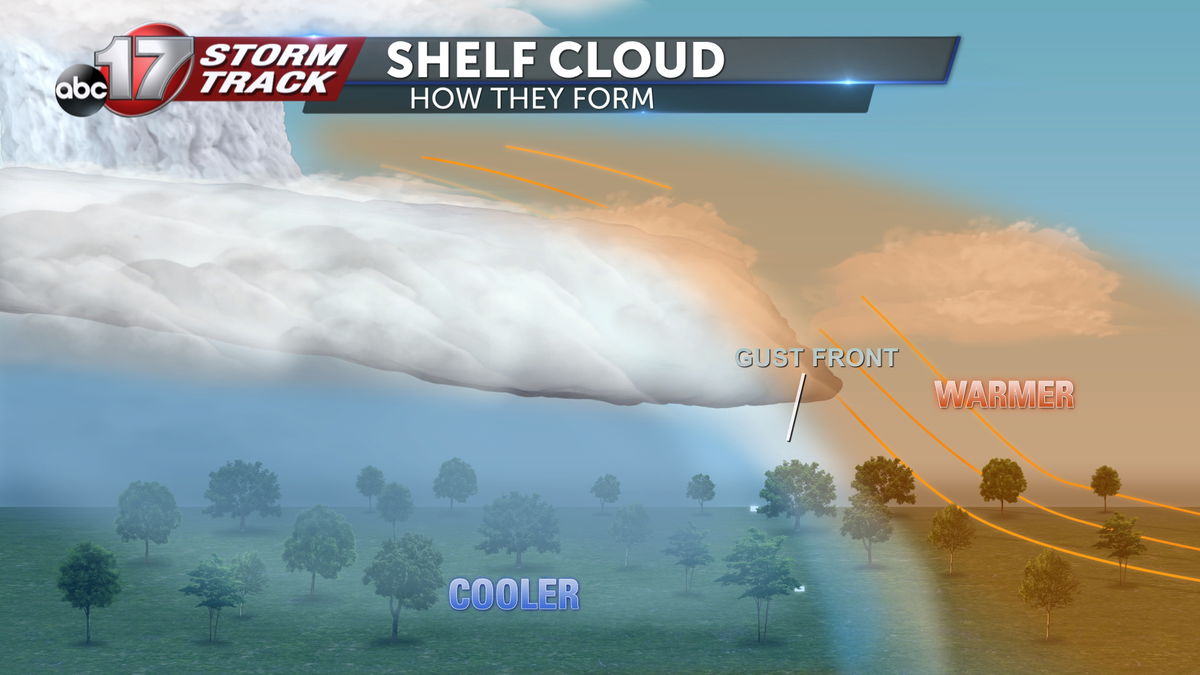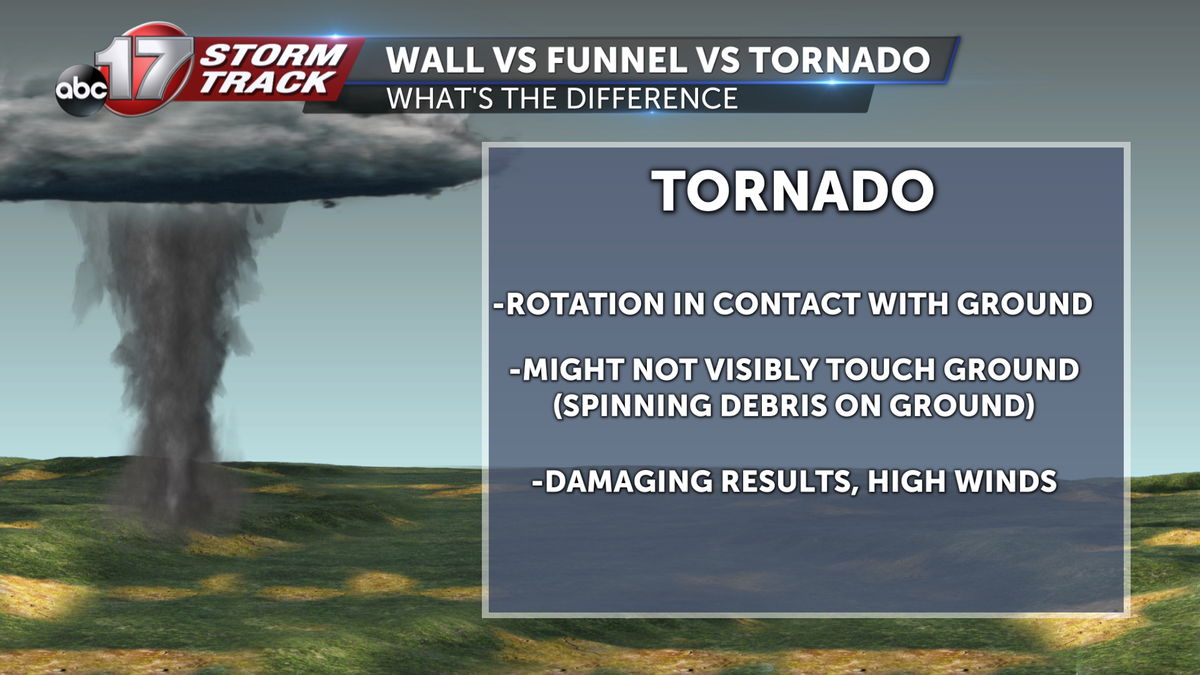Storm cloud structures and understanding the differences

As we sit in the peak of severe storm season in Mid-Missouri, there are many breath-taking views of the sky. Some of these can seem frightening, but some of these also can be deceiving.

A shelf cloud is often most-likely mistaken for a wall cloud. Shelf clouds are long formations that can be see ahead of an approaching storm. These clouds can seem very frightening, but many times they are not the worst parts of the storms. Typically, the most damaging element tied to this formation is the gust front.
A gust front is a surge of colder more dense air on the leading edge of a storm.
The warmer air ahead of the storm looks to rise up towards the region of the main updraft also known as the anvil of the cumulonimbus. From afar, a shelf clouds looks like a book shelf dur to the surging lower clouds. Some horizontal rotation can be seen which leads to false reports of this feature for being a wall cloud.

A wall cloud is a vertically rotating cloud structure extending down from the base of the storm. It resembles a straight wall when looking from afar. The wall cloud is the main rotation of the updraft and can lead to the formation of a funnel cloud or a tornado at any point.

A funnel cloud typically extends beneath a rotating wall cloud and is seen as a thin vertically rotating rotation. It has been compared to that of a rope dropping down.

A tornado occurs once the funnel cloud makes contact with the earth's surface. just because the clouds might not seem to fully touch the ground visually doesn't mean it's not on the ground. debris can be seen beneath the main rotation to confirm a tornado.
